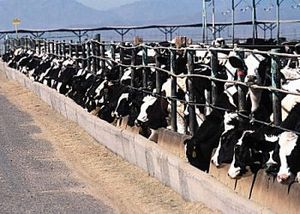Ever wonder how dairy farms can take care of all those cows at once? A new video from the Arizona Milk Producers takes you down to the farm and explains how dairy farms use healthy herd management practices to safeguard their livestock and the Arizona milk supply. Here are some highlights from the video which you can watch in full below.
Whose job is it to look after the health and well-being of the dairy cows?
While farms use veterinarians in caring for their cows, it is actually everyone on the farms job to look after the herds and keep them healthy and happy. Farms use a variety of processes, procedures, and systems to monitor the health of the herd and manage the medical conditions of individual cows. From the farm owner to the day worker, every person is focused on the well being of the cows because healthy cows are productive cows.
How do dairy farms monitor the health of their cows?
Modern dairy farms use data as a key component in managing the overall health of their herd. By tracking details for each cow about their calving interval, conception rate, dry periods, and days in milk, farms can use statistics to help identify problems and properly time medical treatments like vaccinations. The most important job on the farm is evaluating the reproductive status of the cows. This status not only determines how productive the herd will be but it also offers important information about its overall health.
What happens when a cow gets sick?
Sick cows are separated from the main herd so that they can receive treatment. Dairy farms use specific protocols that strive to take care of the cow’s medical needs while using antibiotics as infrequently as possible. Cows that require antibiotics are tagged and marked with leg bands, corralled separately from all other cows, and milked in a different facility. These procedures help ensure that milk is never sold to the public containing antibiotics.
Are there other safeguards in place to ensure milk is safe and free of antibiotics?
In addition to the process used to care for cows undergoing treatment with antibiotics, every load of milk is tested for antibiotic residue prior to sale. If a load is found to contain any residue, it is dumped. This is another part of the residue avoidance procedure that dairy farmers use, showing their commitment to maintaining a healthy herd and providing a quality product.
For more information on herd health, view the Arizona Milk Producers video here.
Related articles
- Making High Quality Milk Begins with Healthy Cows (fillyourplate.org)
- Producing Milk is More Than Just Milking Cows (fillyourplate.org)
- Interesting Facts about Arizona Milk (fillyourplate.org)



